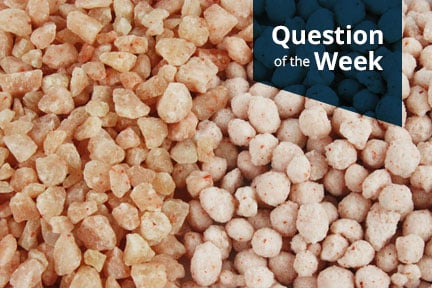Pelletizing and compaction are both very different methods of agglomeration. While the pelletizing process is a form of tumble growth agglomeration, the compaction process is a form of pressure agglomeration.
Pelletizing is also different from compaction in that it is considered a “wet” process, meaning a binder is needed to aid in the agglomeration process. Compaction is a dry process, where typically no binder is needed, because the material adheres to itself under the extreme pressure of the roll compactor.
Additionally, these two processes produce very different end products, with the pelletization process resulting in rounded pellets, and the compaction process resulting in jagged granules.
While there are many materials that can be both compacted, or pelletized, the material and end product requirements, in combination with cost, will typically dictate which process will be best suited for the job.
To learn more on how compaction and pelletization are different, see Pelletizing vs. Compaction Granulation.



